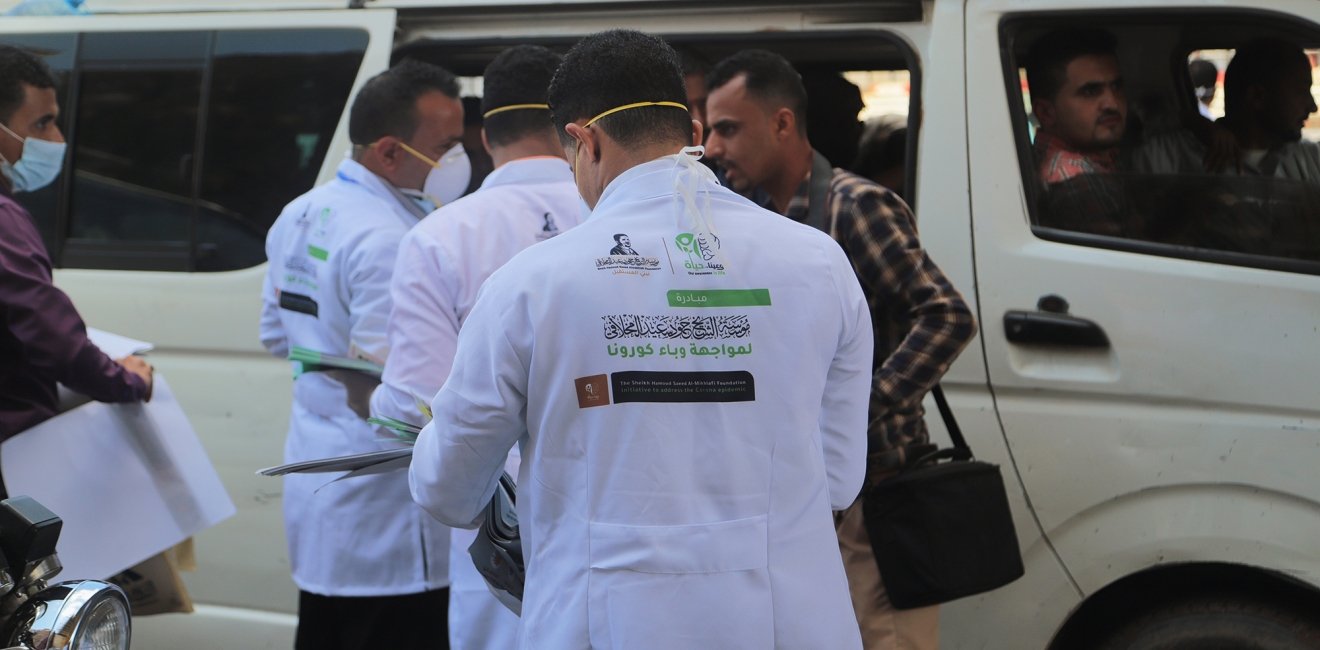Yemen’s ongoing civil war has gradually fallen out of public interest, especially since it remained, until recently, one of the only countries without any diagnosed cases of COVID-19. That all changed in early April when reports first emerged of a suspected case, leading to a chorus of panic, calls for ever-increasing sums of foreign aid, and ill-advised shelter-in-place orders implemented in Yemen’s main urban areas. Media outlets, think tanks, and research centers erupted with seminars and “late-breaking” workshops highlighting the potentially catastrophic impact that the coronavirus could have on a country already suffering from a historic humanitarian crisis. Humanitarian organizations and hospitals in Yemen exponentially increased the sums requested in aid from foreign donors, citing the increased cost of COVID treatment and mitigation on the healthcare system. The Trump administration responded with an additional $225 million in emergency food aid, presumably establishing a precedence for other donor countries.
Amidst this media noise and humanitarian reaction, what kind of relative impact will COVID-19 actually have in Yemen? Data from China, replicated by patterns emerging in other countries across the world demonstrate that coronavirus mortality rates are highest among those aged 65 and older. Children and adolescents have largely been spared the impact from the virus. Yemen has one of the youngest populations in the world with 60 percent of the country under 25 and only 4 percent of the population older than 65. According to WHO data from 2018, Yemen has one of the lowest life expectancies in the world at an average of 65.3 compared with an average life expectancy of over 78.5 in the United States. In Yemen, you are far more likely to die from a heart attack, a traffic accident, or an act of violence than COVID-19.
To date there are 1.2 million reported cases of cholera, which broke out in the early days of the conflict, along with tens of thousands sick with dengue fever, HIV, and diphtheria, highlighting the potential dangers of shifting medical resources away from treating existing local pandemics and reallocating them to a virus of unknown consequence for Yemen. Recent cases of major flooding in urban areas have increased the likelihood of yet another outbreak of cholera and other water-borne pathogens. Even after the flood waters have receded, increased mosquito populations will likely serve as an additional vector for disease transmission, such as malaria, before COVID-19 even makes a significant statistical impact. Danger from existing diseases is made worse by the fact that upwards of 80 percent of the country is reported to lack basic nutrition, requiring some degree of humanitarian assistance. While the imperfect solution for many in the US and Europe was to institute a lockdown or “work-from-home” directive and institute social distancing, this solution is not practical in Yemen where the majority of the population is living day-to-day and will die of starvation before ever being impacted by the coronavirus. Even those privileged enough to “work-from-home” will be faced with unreliable internet access and oft-interrupted power supply, especially in the country’s more remote regions.
While the imperfect solution for many in the US and Europe was to institute a lockdown or “work-from-home” directive and institute social distancing, this solution is not practical in Yemen where the majority of the population is living day-to-day...
The answer for Yemen is not merely an increase in aid. As of April 2020, twelve international organizations have active aid programs in Yemen supporting programs in health, nutrition, hygiene, and other important areas of humanitarian aid. In 2019 alone, over $3 billion in aid was given to Yemen, equaling around 10 percent of the country’s pre-war GDP and ironically constituting one of the country’s most significant “natural resources”. This amount of aid and the manner in which it was distributed may have unintentionally prolonged this conflict by creating a lucrative wartime economy that disincentivizes peaceful resolution.
Humanitarian assistance in Yemen lacks a clear exit strategy as the donor countries and medical aid organizations have not adequately implemented safeguards against the dependency of local and national government. Most of the funds arriving in Yemen come with strings attached and must be distributed according to the donor’s priorities and politics, such as the increasing sums of aid being allotted for COVID-19 treatment. Foreign-dominated models of distribution have caused an overall medical brain drain in Yemen, a country that already had one of the worst doctor-patient ratios in the world. Those medical professionals who could afford to have already left the country, while those remaining behind have gravitated towards the better-funded international projects, leaving basic general healthcare dangerously understaffed. Donors in Yemen need to find ways not only to solve the human resource crisis in the medical field, but also decrease dependency on foreign healthcare workers. Basic healthcare training in cooperation with local governing authorities and hospitals has been hampered by the political sensitivities of the conflict in Yemen and the general difficulty of operating in an active war zone.
Foreign-dominated models of distribution have caused an overall medical brain drain in Yemen, a country that already had one of the worst doctor-patient ratios in the world.
The majority of all funds donated for health efforts in Yemen never actually reach the clinics and hospitals on the other end of the line. Money is often siphoned off in the form of payments to ghost employees, inflated prices for local transport and storage, the theft of medications resold on the black market, and the sale of other counterfeit and dangerous drugs. Increasing sums of humanitarian aid has led to profiteering as control over the financial sector and local security has enabled the Houthi networks to influence aid distribution. The use of formal financial networks for foreign aid distribution has also benefited the entrenched commercial and political elites, as Yemeni riyals are not accessible outside Houthi-controlled banks in Sana’a. In order to pay local Yemeni staff working with foreign donors and to procure goods and supplies in northern Yemen, Western donors need to utilize financial institutions based in Sana’a which are vulnerable to Houthi extortion and open corruption.
Since 2016, Yemen’s neighboring countries of Saudi Arabia and Oman in addition to the UAE have occupied border crossings and ports, seeking to bypass Houthi control through decentralized aid distribution and indirect passage by land, sea, and air. Nevertheless, the laborious transport of humanitarian aid is frequently diverted by local armed actors seeking to generate revenue by creating foreign-sustained markets for medical supplies and general humanitarian aid
Nevertheless, the laborious transport of humanitarian aid is frequently diverted by local armed actors seeking to generate revenue…
While the only effective long-term solution to many of these health crises is to end the state of war in Yemen, humanitarian aid organizations need to abide by the principal of “do no harm”. A total or partial lockdowns and international obsession over the perceived impacts of COVID-19 could have an irreparable impact of a generation of Yemenis who might, as a result, be deprived of medical attention for oral rehydration therapy to treat Cholera. They may have to forgo regular preventative care and will have interrupted timelines for childhood vaccines. In reality, “COVID Tunnel Vision” might cause far more harm to Yemenis than the virus itself, especially since 96 percent of Yemen’s population is under the age of 65 and facing far lower rates of mortality.
The views expressed in this article are those of the author and do not reflect an official position of the Wilson Center.
Author


Middle East Program
The Wilson Center’s Middle East Program serves as a crucial resource for the policymaking community and beyond, providing analyses and research that helps inform US foreign policymaking, stimulates public debate, and expands knowledge about issues in the wider Middle East and North Africa (MENA) region. Read more

Explore More
Browse Insights & Analysis
MENA360°

Russia’s Security Approach to Public Health


